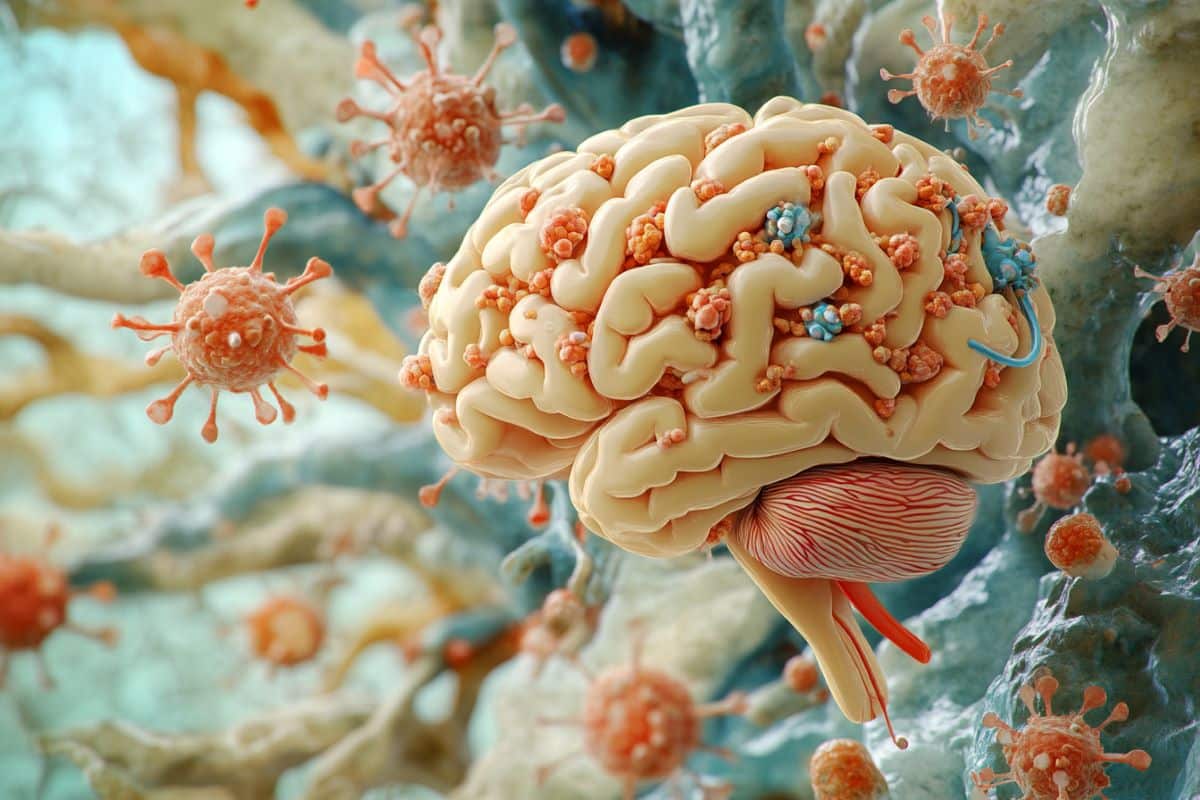Summary: New research suggests that fluoxetine, commonly used as an antidepressant, may also help protect against infections and sepsis. Scientists found that the drug has antimicrobial properties and helps regulate the immune response, reducing the risk of tissue and organ damage.
In mice, fluoxetine lowered bacterial levels, increased anti-inflammatory molecules, and prevented life-threatening immune overreactions. Surprisingly, these benefits were independent of the drug’s known effects on serotonin.
This dual action—killing pathogens while preventing immune damage—could lead to new infection treatments. The findings highlight the potential for repurposing fluoxetine and similar SSRIs for infectious disease management.
Key Facts
- Dual Protection: Fluoxetine both kills bacteria and prevents immune overreactions.
- Sepsis Defense: Mice treated with fluoxetine had lower bacterial loads and survived infections.
- Serotonin Independence: The drug’s immune benefits were unrelated to its effects on serotonin.
Source: Salk Institute
Antidepressants like Prozac are commonly prescribed to treat mental health disorders, but new research suggests they could also protect against serious infections and life-threatening sepsis.
Scientists at the Salk Institute have now uncovered how the drugs are able to regulate the immune system and defend against infectious disease—insights that could lead to a new generation of life-saving treatments and enhance global preparedness for future pandemics.

The Salk study follows recent findings that users of selective serotonin reuptake inhibitors (SSRIs) like Prozac had less severe COVID-19 infections and were less likely to develop long COVID.
Another study found that Prozac—also known as fluoxetine—was effective in protecting mice against sepsis, a life-threatening condition in which the body’s immune system overreacts to an infection and can cause multi-organ failure or even death.
By identifying a mechanism to explain fluoxetine’s surprising defense-boosting effects, Salk researchers have brought fluoxetine and potentially other SSRIs closer to clinical testing for use against infections and immune disorders.
The findings were published in Science Advances on February 14, 2025.
“When treating an infection, the optimal treatment strategy would be one that kills the bacteria or virus while also protecting our tissues and organs,” says Professor Janelle Ayres, holder of the Salk Institute Legacy Chair and Howard Hughes Medical Institute Investigator.
“Most medications we have in our toolbox kill pathogens, but we were thrilled to find that fluoxetine can protect tissues and organs, too. It’s essentially playing offense and defense, which is ideal, and especially exciting to see in a drug that we already know is safe to use in humans.”
While our immune systems do their best to protect us against infections, sometimes they can overreact. In sepsis, the inflammatory response spins so out of control that it starts damaging a person’s own tissues and organs to the point of failure. This same overreaction is also characteristic of severe COVID-19 illness.
An obvious solution would presumably be to suppress the inflammatory response, but doing so can actually make patients more vulnerable to their initial infection—and more susceptible to new ones.
Timing is also critical, as immunosuppressive drugs need to be administered before any tissue damage has taken place.
Instead, an ideal treatment would 1) proactively control the intensity and duration of the immune response to prevent any bodily damage and 2) kill the infection that puts the body at risk to begin with.
To understand what SSRIs might be doing in this context, the researchers studied mice with bacterial infections and separated them into two categories: one pretreated with fluoxetine and the other not.
Excitingly, they saw the mice pretreated with fluoxetine were protected from sepsis, multi-organ damage, and death. The team then launched a series of follow-up experiments to make sense of these effects.
First, they measured the number of bacteria in each mouse population eight hours after infection. Mice treated with fluoxetine had fewer bacteria at this stage, signifying a less severe infection.
The findings demonstrated that fluoxetine had antimicrobial properties, which allowed it to limit bacterial growth.
Next, the researchers measured the levels of different inflammatory molecules in each group. They saw more anti-inflammatory IL-10 in their pretreated populations and deduced that IL-10 prevented sepsis-induced hypertriglyceridemia—a condition in which the blood contains too many fatty triglycerides.
This enabled the heart to maintain the proper metabolic state, protecting the mice from infection-induced morbidity and mortality.
The team decoupled this IL-10-dependent protection from multi-organ damage and death from their earlier discovery of fluoxetine’s antimicrobial effects, in turn revealing the drug’s dual-purpose potential to 1) kill pathogens and 2) alleviate infection-induced damage to the body.
To understand how fluoxetine’s influence on serotonin levels might be contributing to these effects, the researchers also looked at two new mouse populations: Both were pretreated with fluoxetine, but one had circulating serotonin, while the other did not.
Circulating serotonin is a little chemical messenger that travels your brain and body to regulate things like mood, sleep, and pain, and is the main target for fluoxetine’s mental health effects.
They found that fluoxetine’s positive health outcomes were entirely unrelated to circulating serotonin—regardless of whether the mice had serotonin in circulation, they experienced the same infection defense benefits from fluoxetine.
“That was really unexpected, but also really exciting,” says study first author Robert Gallant, a former graduate student researcher in Ayres’ lab.
“Knowing fluoxetine can regulate the immune response, protect the body from infection, and have an antimicrobial effect—all entirely independent from circulating serotonin—is a huge step toward developing new solutions for life-threatening infections and illnesses. It also really goes to show how much more there is to learn about SSRIs.”
Ayres and Gallant say their next step is to explore fluoxetine dosing regimens appropriate for septic individuals. They’re also eager to see whether other SSRIs can have the same effects.
“Fluoxetine, one of the most prescribed drugs in the United States, is promoting cooperation between host and pathogen to defend against infection-induced disease and mortality,” says Ayres, also the head of Molecular and Systems Physiology Laboratories at Salk. “Finding dual protective and defensive effects in a repurposed drug is really exciting.”
Other authors include Karina Sanchez, Emeline Joulia, and Christian Metallo of Salk and Jessica Snyder of the University of Washington.
Funding: The work was supported by the National Institutes of Health (DPI AI144249, R01 AI14929, F31 AI169988, T32 GM007240-43, T32 GM133351, NCI CCSG: P30CA014195) and the NOMIS Foundation.
About this psychopharmacology and sepsis research news
Author: Salk Comm
Source: Salk Institute
Contact: Salk Comm – Salk Institute
Image: The image is credited to Neuroscience News
Original Research: Open access.
“Fluoxetine promotes IL-10 dependent metabolic defenses to protect from sepsis-induced lethality” by Janelle Ayres et al. Science Advances
Abstract
Fluoxetine promotes IL-10 dependent metabolic defenses to protect from sepsis-induced lethality
Selective serotonin reuptake inhibitors (SSRIs) are some of the most prescribed drugs in the world.
While they are used for their ability to increase serotonergic signaling in the brain, SSRIs are also known to have a broad range of effects beyond the brain, including immune and metabolic effects.
Recent studies have demonstrated that SSRIs are protective in animal models and humans against several infections, including sepsis and COVID-19; however, the mechanisms underlying this protection are largely unknown.
Here, we mechanistically link two previously described effects of the SSRI fluoxetine in mediating protection against sepsis.
We show that fluoxetine-mediated protection is independent of peripheral serotonin and instead increases levels of circulating interleukin-10 (IL-10).
IL-10 is necessary for protection from sepsis-induced hypertriglyceridemia, preventing cardiac effects including impairment of glucose oxidation, ectopic lipid accumulation, ventricular stretch and possibly cardiac failure.
Our work reveals a beneficial “off-target” effect of fluoxetine, and reveals a protective immunometabolic defense mechanism with therapeutic potential.






